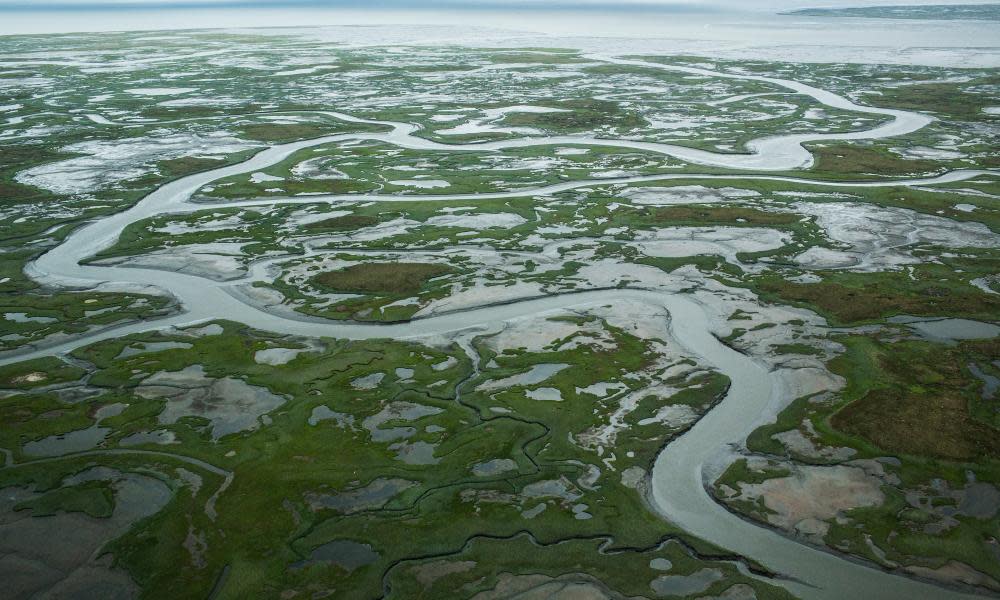Slow-freezing Alaska soil driving surge in carbon dioxide emissions

Alaska’s soils are taking far longer to freeze over as winter approaches than in previous decades, resulting in a surge in carbon dioxide emissions that could portend a much faster rate of global warming than scientists had previously estimated, according to new research.
Measurements of carbon dioxide levels taken from aircraft, satellites and on the ground show that the amount of CO2 emitted from Alaska’s frigid northern tundra increased by 70% between 1975 and 2015, in the period between October and December each year.
Researchers said warming temperatures and thawing soils were the likely cause of the increase in CO2 at a time of year when the upper layers of soil usually start freezing over as winter sets in.
In the Arctic summer, the upper level of soil, which sits above a vast sheet of permafrost that covers much of Alaska, thaws out and decomposing organic matter starts to produce CO2. From October, colder temperatures help freeze the soil again, locking up the CO2.
Alaska’s warming autumns and winters are altering this process. Whereas soils 40 years ago took about a month to completely freeze over, the process can now take three months or longer. In some places in the state, the soil is not freezing until January, particularly if there is a layer of insulating snow.
The result is a huge and continuing expulsion of CO2, a planet-warming gas, into the atmosphere. In 2013, a particularly warm year racked by wildfires in Alaska, around 40m more tons of CO2 was given out by soils than absorbed by vegetation – an amount four times larger than that emitted by the state’s use of fossil fuels.
“A lot of models were predicting this thawing would happen, but not for another 50 to 100 years – we didn’t think it would happen this quickly,” said Roisin Commane, researcher at the Harvard John A Paulson School of Engineering and Applied Sciences and lead author of the report, published in the Proceedings of the National Academy of Sciences.
“The timescale of this surprised many of us,” she said. “There is a lot of potential CO2 from these soils, which worries people. We’d prefer the carbon stays there.”
Commane said the large volume of CO2 released suggested some of it was coming from permafrost. Typically found a meter or so below much of Alaska, permafrost contains carbon that has been frozen for up to 40,000 years. It is being scrutinized by scientists concerned that it is starting to thaw.
It is estimated that Arctic permafrost contains roughly twice as much carbon as the Earth’s entire atmosphere. This means its disappearance would probably contribute to a severe change in the climate that would be dangerous to many species, including humans.
“Some of this CO2 has to come from permafrost thawing but we don’t know how much,” said Commane. “That is something we really want to work out.”
Data for the research was taken from Nasa analysis of CO2 from aircraft and satellites, as well as readings from a National Oceanic and Atmospheric Administration station in Barrow, Alaska.
The Arctic is warming at around twice the rate of the rest of the world and Alaska has experienced three record warm years in a row. In 2016, the average temperature was 5.9F warmer than the long-term average.
“The entire Alaska region is responding to climate change,” said Donatella Zona of San Diego State University in California, who was not affiliated with the study.
“The amount of carbon lost from Arctic ecosystems to the atmosphere in the fall has increased significantly over the past 40 years. By better capturing these cold season processes and putting previous smaller-scale measurements into a bigger context, this study will help scientists in their efforts to improve climate models and predictions of Arctic climate change.”

 Yahoo News
Yahoo News 
